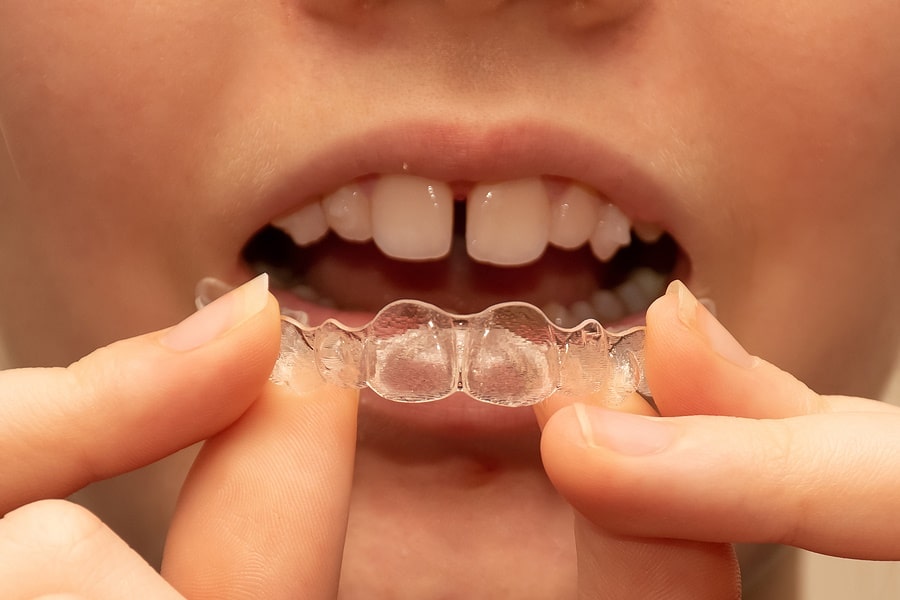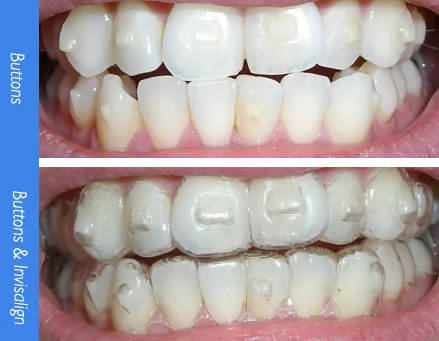Invisalign for Teenagers: A Modern Solution to Straightening Young Smiles
Invisalign for Teenagers: A Modern Solution to Straightening Young Smiles
Blog Article
Invisalign vs. Traditional Braces: Which Choice Is Right for You?
When considering orthodontic treatment, the selection between Invisalign and traditional dental braces presents several important aspects that merit mindful examination. Invisalign offers a very discreet alternative with detachable aligners, while traditional dental braces provide a much more visible yet reliable service for serious misalignment. Each choice includes distinct benefits and downsides associated with aesthetic appeals, convenience, therapy duration, and price. Understanding these subtleties is crucial for making an informed choice that straightens with your personal preferences and way of living. The inquiry remains: which choice will ideal meet your orthodontic needs and assumptions?
Summary of Treatment Alternatives

On the other hand, conventional dental braces consist of metal brackets and wires that are bonded to the teeth. This method applies continual stress in time to accomplish placement. While efficient for intricate orthodontic concerns, standard braces need routine brows through for adjustments and can present challenges in maintaining dental hygiene as a result of the problem of cleaning up around wires and brackets.
Both alternatives have their benefits, and the choice frequently hinges on specific dental conditions, lifestyle preferences, and patient compliance. Eventually, speaking with an orthodontic specialist is critical for determining the most ideal therapy plan tailored to private needs. Comprehending the subtleties of each option can dramatically affect the total success of orthodontic treatment.
Aesthetic Considerations
A substantial element affecting the choice in between Invisalign and conventional dental braces is the visual appeal each treatment supplies. Invisalign aligners are crafted from clear plastic, making them essentially invisible when worn. This very discreet appearance is particularly appealing to teenagers and adults that might really feel uncomfortable concerning their orthodontic therapy. The capacity to maintain an all-natural smile throughout the placement procedure can significantly improve the person's confidence in social and professional settings.
On the other hand, traditional braces contain steel brackets and wires, which can be extra obvious. While advancements in orthodontic innovation have actually led to the advancement of smaller brackets and tinted elastics, conventional dental braces still preserve an even more conspicuous profile. For some people, the presence of braces may deter them from seeking required therapy.
Inevitably, the selection in between Invisalign and standard dental braces might rest on personal choices regarding appearances. People who prioritize discretion frequently lean toward Invisalign, while those who are less worried about visibility may choose conventional dental braces. Comprehending the visual ramifications of each choice is important for making an informed choice that lines up with one's way of living and choices.
Convenience and Convenience

In regards to comfort, Invisalign aligners are removable, enabling individuals to appreciate their preferred foods without constraint and keep optimal dental hygiene. Cleaning and flossing are simplified, as the aligners can be secured throughout these routines, whereas typical dental braces call for mindful navigating around braces and cords.
In addition, Invisalign's dynamic system permits fewer orthodontic brows through. Patients generally get numerous collections of aligners simultaneously, which can enhance the treatment procedure and reduce time spent in the orthodontist's chair. In comparison, conventional dental braces require routine modifications, making them much less practical for those with busy routines. Invisalign. On the whole, the comfort and convenience of Invisalign make it an enticing option for lots of individuals looking for orthodontic therapy.
Treatment Duration and Efficiency
While both Invisalign and typical braces work in remedying dental imbalances, the duration of treatment can vary considerably between both alternatives. Normally, Invisalign therapy can take anywhere from 12 to 18 months, depending visit this site upon the intricacy of the situation. The clear aligners work by slowly changing teeth right into their preferred placements, and normal follow-ups with an orthodontist aid ensure development remains on course.
On the other hand, traditional braces commonly call for a longer commitment, normally ranging from 18 months to three years. This results from their set nature and making use of braces and cords, which can be more effective for complicated cases and extreme imbalances (Invisalign). The treatment efficiency of conventional braces is well-documented, as they enable exact modifications and higher control over tooth motion
Ultimately, the option in between Invisalign and traditional braces might rest on both the awaited treatment duration and the certain oral issues available. Consulting with an orthodontist is vital, as they can offer customized recommendations based on private needs, making certain the chosen method lines up with wanted durations and end results.
Price Contrast and Insurance Coverage Options
Price plays a considerable duty in the decision-making process for individuals taking into consideration orthodontic treatment, whether selecting Invisalign or standard dental braces. Generally, the price of Invisalign arrays from $3,000 to $8,000, while traditional braces commonly set you back between $2,000 and $6,000. Variables affecting these prices consist of the intricacy of the case, the duration of treatment, and geographical location.
Insurance coverage can considerably influence out-of-pocket costs. Many oral insurance policy plans provide partial coverage for orthodontic therapies, however the specifics can differ widely. It is critical for clients to evaluate their insurance plan to identify the degree of protection for either option. Typically, conventional dental braces might be more frequently covered by insurance coverage strategies contrasted to Invisalign, which some insurers categorize as an aesthetic procedure.
Furthermore, a number of orthodontic practices supply versatile settlement plans, making both therapy options much more accessible. Individuals must inquire regarding potential funding choices and discount rates for upfront repayments. Reviewing the overall price, see this including insurance policy advantages and repayment plans, is crucial for making an informed decision that straightens with both visual choices and spending plan factors to consider.

Final Thought
In summary, the choice in between Invisalign and typical braces depends upon numerous aspects, consisting of visual choices, comfort, treatment period, and cost. Invisalign supplies a discreet, detachable alternative that facilitates oral health and dietary versatility, while conventional braces may be much more suitable for complicated oral issues and usually come with a reduced price factor. Eventually, consultation with an orthodontist is important to examine specific situations and establish the most proper treatment alternative for achieving optimal dental placement.
When thinking about orthodontic treatment, the selection in between Invisalign and typical dental braces offers a number of important variables that merit Discover More careful assessment.Contrasting Invisalign and conventional braces reveals distinctive treatment options for orthodontic correction.While both Invisalign and standard braces are efficient in correcting oral misalignments, the duration of therapy can differ significantly in between the two alternatives.Cost plays a considerable function in the decision-making procedure for people thinking about orthodontic therapy, whether deciding for Invisalign or conventional braces.In recap, the choice in between Invisalign and conventional dental braces pivots on several factors, including aesthetic choices, comfort, treatment period, and cost.
Report this page